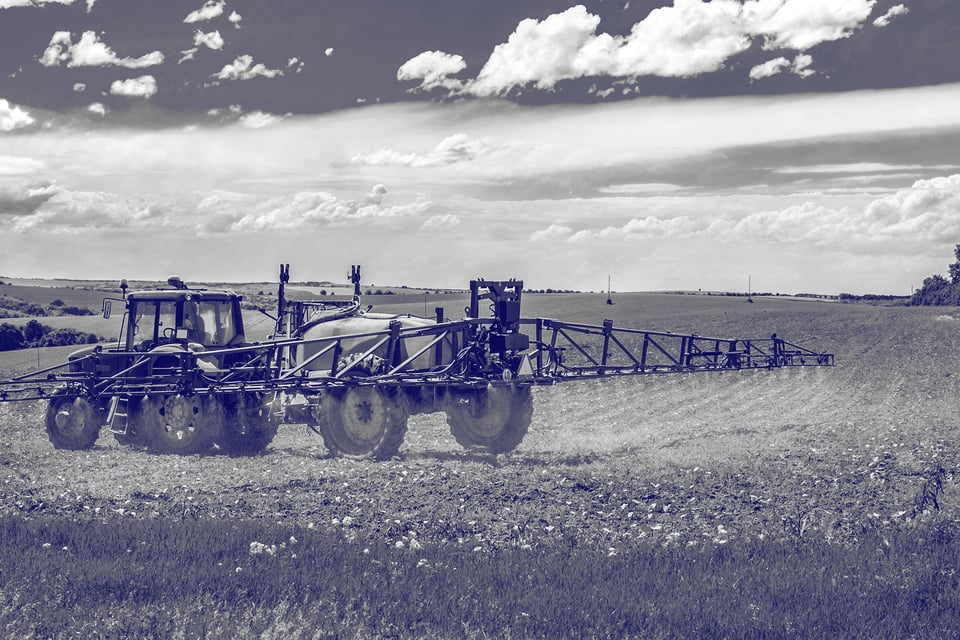
The European Union aims to facilitate the use of microorganisms in the biological control of pests and plant diseases to reduce the dependence on chemical plant protection products like pesticides. First, they need to be deemed safe for use though.
The EU's Farm to Fork Strategy, which is part of the EU Green Deal, aims to accelerate our transition to a sustainable food system. One method to achieve that goal is to provide alternative tools to substitute chemical plant protection products with more sustainable alternatives. The new requirements in EU plant protection products regulation for microorganisms used as biocontrol agents are expected to lead to faster access to the EU market for new plant protection products containing them.
The latest developments in EU plant protection products regulation
On 8 February 2022, the EU Member States endorsed four Commission Implementing Regulations (which are legally binding and directly applicable in all member states) which amend the existing data requirements to better reflect the scientific developments and biological properties of microorganisms. A clearer distinction is made between chemical active substances and microorganisms in the requirements.
See the European Commission's (EC) release on Micro-organisms used in plant protection products here.
The changes reflect the Commission Guidance documents on the risk assessment of metabolites and antimicrobial resistance published in 2020 as Commission staff working documents and applicable since 2021.
The amended regulations
Commission Draft Regulations amending Regulations (EU) No 283/2013 and 284/2013 lay down data requirements for active substances and plant protection products containing microorganisms, respectively. Draft regulations amending Regulations (EU) No 546/2011 and 1107/2009 set out uniform principles and criteria for the evaluation and authorisation of plant protection products and active substances that are microorganisms.
We hand-picked a few interesting requirements from the Draft Regulations.
1. Chemical active substance or microorganism?
In the Regulations, data requirements are described separately for chemical active substances in Annex Part A and for microorganisms in Part B.
However, there has been legal uncertainty regarding whether Part A or Part B is to be applied to microorganisms, because the mode of action is often based on metabolites (chemical substances) produced by the microorganism.
The amendments try to clarify the situation:
Part A (chemical active substances) is valid if a metabolite is purified from the microorganism or the microorganism containing the metabolite is dead (no longer capable of replication or of transferring genetic material).
Part B (microorganisms) is valid for a single or a defined combination of microorganisms, including metabolites that are claimed to contribute to the plant protection action only in the presence of the microorganism.
2. Microbial Pest Control Agent as manufactured
The amendments introduce the term "Microbial Pest Control Agent as manufactured" because certain tests are required to be performed using a sample of the MPCA as manufactured, rather than using the active substance or the other components of the MPCA as manufactured after purification.
3. The use of WGS in the identification of metabolites of concern
Metabolites of concern must be identified by various means, for example based on scientific literature. The absence of the gene(s) encoding the identified metabolite based on e.g. whole genome sequence data analysis is considered to prove hazards are absent for that metabolite.
4. Acquired and intrinsic antimicrobial resistances
Part B also defines acquired and intrinsic antimicrobial resistances.
An antimicrobial resistance gene is considered intrinsic if it is
a) located on a chromosome
b) in the absence of a mobile genetic element, and
c) is shared by the majority of wild type strains of the same species.
Acquired antimicrobial resistance means
a) non-intrinsic and acquired novel resistance
b) enabling a microorganism to survive or multiply in the presence of an antimicrobial agent
c) at concentrations higher than those which inhibit wild-type strains of the same species.
It is worth noting that the definition differs from that defined by EFSA in its 2018 Guidance on the characterisation of microorganisms used as feed additives or as production organisms.
4. Identifying microorganisms
The microorganism shall be identified as unequivocally belonging to a certain species, and a phylogenetic tree must be provided.
If the strain is not wild-type, all known differences between the modified microorganism and the parent wild strain shall be provided. The unequivocal identification at the species level can be sometimes very difficult, and if the data do not allow the assignment of the strain to a known microbial species, identification at the species level is expected to require publication e.g. in the International Journal of Systematic and Evolutionary Microbiology.
5. AMR evaluation of microorganisms used for plant protection
Detailed principles for uniform evaluation of microorganisms used for plant protection have been given for each data requirement.
Bacterial strains can be approved as active substances, if it is concluded that they do not have any known, functional and transferable gene coding for resistance to relevant antimicrobial agents. Furthermore, an active microorganism substance may be considered a low-risk active substance if its susceptibility to at least two classes of antimicrobial agents has been demonstrated. Low-risk substances are approved for a period of 15 years instead of the normal 10-year period.
What happens next?
The implementing Regulations will now be scrutinised by the European Parliament and the Council. If there are no objections, they will be adopted and become applicable in autumn 2022. A transitional period after the date of entry into force of the Regulations is planned.
Biosafe welcomes data requirements that are more appropriate for microorganisms, and the focus on horizontal gene transfer is justified. Biosafe can assist you in the unequivocal identification of your microorganism and in the identification and interpretation of genes of concern. Our assessments of the transferability of antimicrobial resistance genes and the potential to produce harmful metabolites are based on whole genome sequencing data.
We can help you identify and sequence your microorganisms

Read more about Food safety regulations:
Food safety regulations in the European Union »
Topic:










